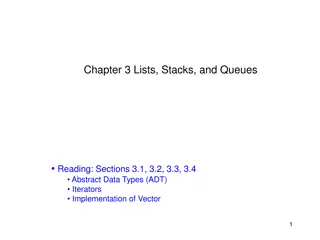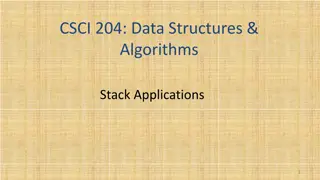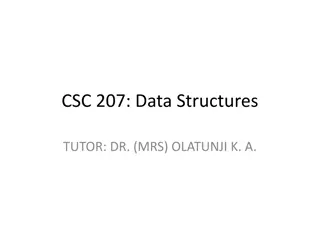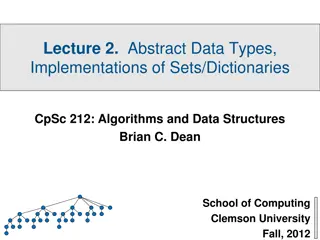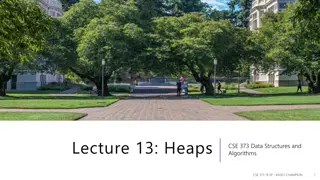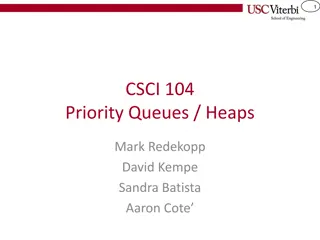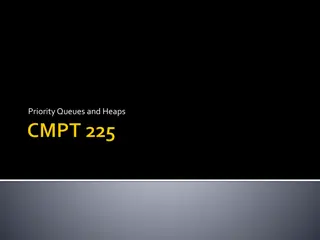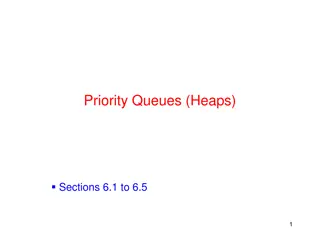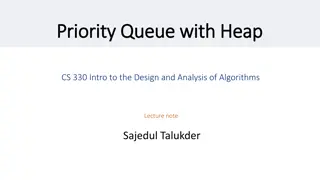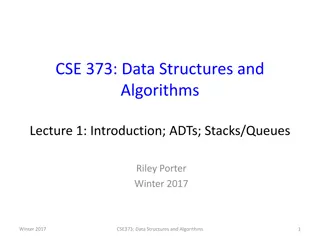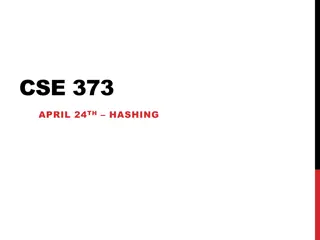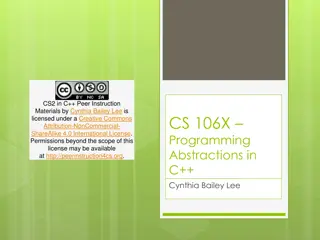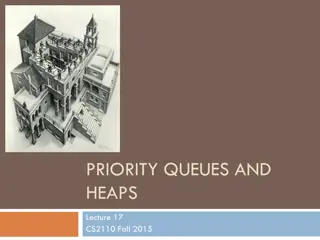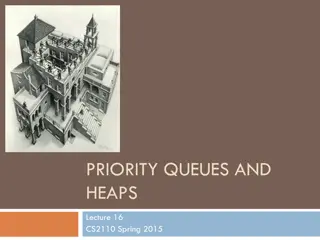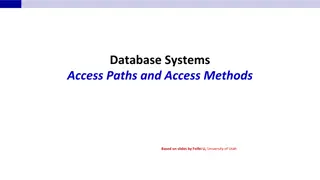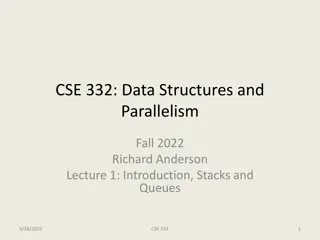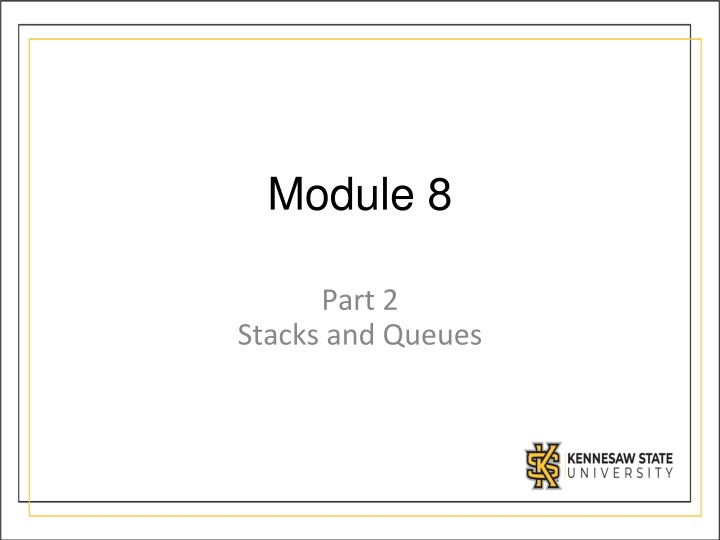
Stacks and Queues in Data Structures
Explore the concepts of stacks and queues - from their implementations and behaviors to their efficiency in arrays or linked lists. Learn about the Java built-in stack and queue, and compare the first-in-last-out and first-in-first-out behaviors. Discover the efficiency differences and operations like push, pop, enqueue, and dequeue.
Download Presentation

Please find below an Image/Link to download the presentation.
The content on the website is provided AS IS for your information and personal use only. It may not be sold, licensed, or shared on other websites without obtaining consent from the author. If you encounter any issues during the download, it is possible that the publisher has removed the file from their server.
You are allowed to download the files provided on this website for personal or commercial use, subject to the condition that they are used lawfully. All files are the property of their respective owners.
The content on the website is provided AS IS for your information and personal use only. It may not be sold, licensed, or shared on other websites without obtaining consent from the author.
E N D
Presentation Transcript
Module 8 Part 2 Stacks and Queues
Stacks Implement a first-in-last-out behavior also known as a last-in-first-out behavior. Push() to add an element Pop() to remove an element Peek() returns the top element without removing it from the stack
Notice the order of the output Although Item 3 was the last item added to the stack, it s what we see at the top when we peek(). When we pop from the stack we get the last item added, which was Item 3. Now the top item on the stack is Item 2.
Stack in a linked list? You could implement a stack in a linked list: Push in at the front Pop from the front Or you could: Push in at the back Pop out of the back. Which of these is easier? What if you have a head and a tail link?
Stack in an array or ArrayList? You could implement a stack using an array. Push into the first empty cell. Pop from the last occupied cell. You could implement a stack using an array. Push into cell 0 (after you move everything down) Pop out of cell 0 (and then move everything back up one) One of these is easier than the other, also more efficient.
Big O of each Is it more efficient to implement a stack in an array or a linked list? Does it matter which side you push/pop from in each case?
Queues Implement a first-in-first-out behavior Enqueue() to add an element Dequeue() to remove an element Add and remove from the opposite sides of the internal data structure 4/26/2018
Using the built in Queue in Java Queue is an interface in Java, as such there are many implementations, including ArrayDequeue, and Priority Queue
Standard Queues Much like the line for checking out in a grocery store, the first person who gets into the queue, is the first person processed. The last person who gets in the queue is the last person processed.
Queues Can be implemented with Linked Lists. Enqueue at front of list Dequeue at end of list Can be implemented with Arrays Enqueue at back of array Dequeue at front of array (and move everyone up) If only there were a way to keep track of front and back of the queue? 4/26/2018
Priority Queues In the real world, sometimes things are not processed in the order they are received. Think of a hospital ER. People are triaged as they come in and the most critical patients are seen before less critical. This is an example of a priority queue. The priority is used to decide what is processed next. Java has a class PriorityQueue that implements this type of queue. It also has add(), peek() and remove() methods.
Stack vs Queue 4/26/2018

